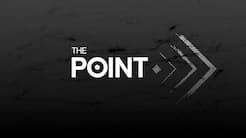The Victorian Aboriginal Heritage Council (VAHC) has released a new report making 24 recommendations to amend the Aboriginal Heritage Act 2006 to support self-determination.
The recommendations from 'Taking Control of our Heritage' convey three key themes - furthering self-determination of registered Aboriginal parties, increasing the autonomy of the VAHC and recognising, protecting and conserving Aboriginal cultural heritage.
“As we emerge from bushfires, a pandemic and international condemnation of the destruction of sacred Aboriginal sites, it is time to take action and change the future for all Victorians,” Taungurung Elder and VAHC Chairperson Mick Harding said.
“The steady and significant annual increase in development impacting on Aboriginal Cultural Heritage, and its ongoing casual destruction and salvage, must be acknowledged.
“All harm to Country, to Cultural Heritage, to Culture is harm to the wellbeing of Aboriginal Peoples."
One of the fundamental issues under the current Act is the lack of power Traditional Owners have to stop harm to their cultural heritage, according to Mr Harding.
“These recommendations would place responsibility in the hands of its Traditional Owners, recognising them as the authority and rightful owners,” he said.
Victoria’s Aboriginal Affairs Minister Gabrielle Williams stressed that Victoria is the only state that gives Traditional Owners the "final say in decision-making" about heritage protection.
“Under the Act, Aboriginal Heritage, whether registered or unregistered and on freehold or public land, may not be harmed unless authorisation is given,” she said. But Mr Harding said damages to the 1,500-year-old Kooyang Eel stone arrangement reported in the state’s southwest in April “highlights the inadequacies" of current protections.
But Mr Harding said damages to the 1,500-year-old Kooyang Eel stone arrangement reported in the state’s southwest in April “highlights the inadequacies" of current protections.

An aerial view of the stone formation, which marks the outline of an eel (top centre). The site is of deep cultural significance for the local community. Source: Supplied
“The Eastern Maar Kooyang Eel ceremonial arrangement has been on the Victorian Aboriginal Heritage Register for decades," he said.
"This registration is the highest protection available for Aboriginal Cultural Heritage in the state, and yet much of the tail was destroyed.
“In many ways, the Act is used after the horse has bolted ... If there was a suitable disincentive for damage, such as financial or effective prosecution measures, much damage would not occur.”
The damage is still being investigated.
While the Victorian Government is not currently reviewing the Aboriginal Heritage Act it is open to feedback.
“We will always consider suggestions to further improve the protection of Aboriginal Heritage," said Gabrielle Williams.
“We will carefully consider the report’s recommendations, and continue our nation-leading work empowering Traditional Owners in the protection and management of their cultural heritage”.


